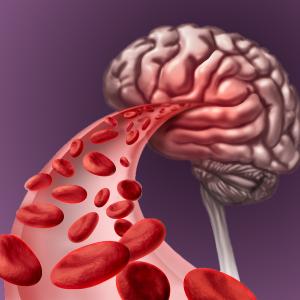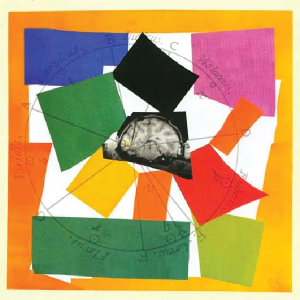Dr. Joyce Chung — Gathering Helping Hands to Grasp Mental Health

Finding treatments for mental health conditions doesn’t just deal with the people who live with them. Healthy volunteers play a critical part in the science of understanding our brains and behavior. But what qualifies as “healthy” can vary across labs and skew how scientists interpret study results. Dr. Joyce Chung, the Deputy Clinical Director at the National Institute of Mental Health (NIMH), is changing that. She is creating a pool of vetted volunteers to bolster the integrity, efficiency, and safety of mental health research.
Learn more about healthy volunteer research at NIMHResearchVolunteer.ctss.nih.gov.
Categories:
Mental health Clinical research Neuroscience
Transcript
>> Diego (narration): Usually, I ask senior scientists in the IRP to come on the podcast to discuss research findings or talk about their body of work throughout their careers. So, a lot of the time our conversations are looking back at the past, even if it is the recent past. But there is so much science happening now, in real-time, at NIH, and a lot of doesn’t grab flashy headlines or really get the recognition it deserves.
It’s the type of unsung science that humbly paves the way to new scientific discoveries.
[LAYING BRICKS SOUND EFFECT]
Brick by brick it builds a foundation to develop treatments for when our brains and bodies veer off course. And sometimes, laying those bricks doesn’t just deal with people living with illness.
>> Dr. Chung: Healthy volunteers are an important aspect of a lot of the research we conduct at NIMH.
>> Diego (narration): That’s Dr. Chung.
>> Dr. Chung: Hi, I’m Joyce Chung. I’m a psychiatrist and I work at the office of the clinical director at the National Institute of Mental Health.
>> Diego (narration): Dr. Chung is the Deputy Clinical Director at NIMH. She is assembling a pool of healthy research volunteers that other investigators can source from for their studies.
>> Dr. Chung: When we look back across all our clinical protocols, it looked like more than 80% of studies enrolled a healthy volunteer population. So of course, they’re widely used. But there was such a variation among people and what they consider to be healthy. So we are trying to harmonize and standardize this process across labs.
>> Diego (narration): Where biochemists might go to a laboratory supplier for the pipettes and reagents that they need to need to conduct their experiments, mental health researchers can turn to Dr. Chung to connect them with vetted volunteers who are willing and able to help uncover the mysteries of the mind and develop treatments for the diseases that further obscure them.
Volunteers are a critical component in the science of understanding our brains and behavior, that’s why for this episode I wanted to peek behind the scenes of science-in-the-making to see what it means to be a healthy volunteer and why the healthy are so important to clinical research.
[TRANSITION MUSIC]
>> Diego (narration): To pull back the curtain back on the healthy volunteer research program, I went to the Behavioral Health Clinic inside the NIH Clinical Center. This is where Dr. Chung’s team carries out the series of mental and physical evaluations that determine the eligibility of their participants.
[CLINIC INTERCOM FADES IN THE BACKGROUND]
>> Medical support assistant: I have to place this on your wrist so you can check in and all you have to do is scan the barcode under the light.
>> Diego (interview): Ok.
>> Diego (narration): The morning of my visit I was greeted by the nursing staff who checked me in and measured my vitals.
>> Nurse: Diego, can you please come. Let’s take your vitals.
>> Diego (interview): Sure.
[SOUND OF RUSTLING, FOOTSTEPS AND DOOR OPENING]
>> Nurse: So I’m going to go ahead and take your vitals and I’ll take your temperature also.
[BUZZING SOUND OF MACHINE]
>> Diego (narration): This might be a good time to mention some disclaimers. For reasons of confidentiality and scientific integrity, Dr. Chung’s team and I agreed that we would only simulate the process they use to evaluate their volunteers with me as a mock participant. You’ll hear us go through the motions, but I won’t actually be considered for the pool. Just an FYI.
But back to the clinic.
[CLINIC BACKGROUND FADES BACK IN]
>> Diego (narration): After my vitals, I met Dr. Stephen Sinclair, the group’s resident psychologist who explained the importance of informed consent.
>> Dr. Sinclair: The first step in any NIH study is to do a consent. The consent will outline what the study is about and what we are going to do here in this face-to-face assessment.
>>Diego (narration): According to Dr. Sinclair, the goal of the volunteer program is to make volunteers and the data they provide more accessible to scientists across the board.
>> Dr. Sinclair: I like to say that in the old days, scientists keep all the information to themselves. They were like little silos in that they didn’t want to share information, because they had collected it and worked very hard for it. But now the goal, broadly speaking in science, is to widely distribute information and our study follows that pattern. So the goal is to distribute the information for others to use.
>> Diego (narration): Dr. Sinclair also administers the comprehensive behavioral assessments to assure participants’ safety and determine whether they meet the program’s criteria to be considered healthy. The assessment includes questions that range from simple get-to-know-yous:
>> Dr. Sinclair: What do you like to do in your free time? What do you like to do for enjoyment?
>> Diego (narration): To the more personal matters. And trigger warning these questions do deal with sensitive topics like suicide, depression, and related mental health disorders.
>> Dr. Sinclair: Have you ever had a time when you felt that life was not worth living? Or that you’d be better off dead? Or maybe that you wanted to go to sleep and not wake up the next day?
>> Diego (narration): The intent is not to pry, but to get a clear picture of how a person is feeling and make sure they are not in danger of hurting themselves or others and is not severely depressed needing immediate medical attention.
>> Dr. Sinclair: Because that’s always the most important thing, it’s not the research but the safety and health of the participant.
>> Diego (narration): Of course, it’s not realistic to maintain a perfect 10 on the happiness scale at all times. Life happens. To qualify as quote, healthy, it doesn’t mean your mood can’t fluctuate.
>> Dr. Sinclair: You may have a had a bad week at work and your boss is on your case to get a couple of projects completed – you’re putting in extra hours, you’re not sleeping at night—but you wouldn’t meet the criteria for an anxiety disorder. That’s more kind of a situational up and down that we all experience to some degree over the course of time.
>> Dr. Chung: We don’t want perfection. Health is in the eye of the beholder, and we have a particular kind of way that we determine it. We really want it to be a relatively healthy person. It doesn’t mean they can’t have aches and pains or occasional moments of worry or even like have a stable thyroid condition, let’s say. I think those are things we would all find acceptable.
>> Diego (narration): Just like there is no singular definition for what it means to be quote unquote healthy when it comes to mental health, the same is true for physical health.
>> Dr. Pavlectic: There is a continuum of everything. So, when do you say what is normal?
>> Diego (narration): That’s Dr. Adriana Pavletic, the clinical physician on staff. She conducts physical exams and gathers participants’ full health histories, because as she puts it…
>> Dr. Pavletic: Mind and body are not separate. Physical and mental health are interconnected. Many physical conditions may affect brain function.
>> Diego (narration): Conditions like hypertension, for example. People with elevated blood pressure are more likely to experience issues with mood, such as anxiety and depression. And sometimes, conditions that affect mental health develop so slowly that a person might not notice a difference or realize it’s an issue until they are diagnosed.
>> Dr. Pavletic: That clinical part is almost like building a foundation of your house. It’s a lot of work, you may exclude many people, it costs time and resources, but if it’s not done properly, your house even if it looks good may collapse.
[BRICK CRUMBLING SOUND]
>> Diego (narration): By now, you’ve heard how thorough Dr. Chung and her team are in their evaluation of potential volunteers. And that didn’t include the cognitive assessments, blood and urine tests, and optional MRIs and MEGs they use to see brain activity and structure. It might seem like a lot, but if it weren’t so rigorous, volunteers who are either not aware or willfully chose not to disclose their health conditions could compromise future studies. Having stringent measures in place, helps assure that scientists who recruit from the pool are using a proper standard for comparison in their interpretation of research results.
Not only that, the healthy volunteer program is making mental health research more efficient. Think how wasteful and repetitive it is when individual investigators have to screen their own volunteers with limited resources for their separate labs.
>> Dr. Chung: There’s a lot of time and effort as you already saw from the clinic today. Sometimes it takes two to three hours to thoroughly evaluate a person. So, it’s really an efficiency of resources for one. I would say another thing that has been really useful is we were one of the first in our institute to use online methods for screening. So we have this study website, where people can fill out forms that give us a pretty good picture of whether or not they would meet our criteria, at least initially. And that really saves a lot time in bringing in people who might not be eligible.
We have also a really good recruitment team who helps do a direct-mail campaign. Which if you do for each lab, it can really get expensive. So this is a way to be very efficient in terms of our budget, using the tax dollars wisely kind of thing.
I think people don’t recognize about our evaluation, what it entails. It really is a very comprehensive, big picture view of their overall health, with emphasis on brain health of course, but I think we do a really good history, we do a physical exam, probably more thoroughly than a lot of exams that people get from their doctors on the outside. We do labs. And we also take adequate history to really understand someone’s background. And I think the thoroughness of it is important, but it also reassures the participant and us that they are a good fit.
>> Diego (interview): Yeah, definitely. I also think it’s kind of a cool way to get to know your brain or your body better. I mean, even just doing the mock evaluations, it’s a very introspective experience. I mean, getting to talk about your mental health and laying out your medical history gives you a chance to take stock of your overall wellbeing. And I’m thinking it also give you a chance to learn things about yourself that perhaps you didn’t know. Has that happened before—where a person discovered something about their health as they were going through this process?
>> Dr. Chung: I know recently, we had someone who we discovered to be a hepatitis B carrier. This person wasn’t actually that aware that they were a carrier so it was good information that we gave back to them, and they usually appreciate hearing that. So occasionally you’ll have a finding on the examination or the laboratory or even the MRI that shows evidence for something that’s clinically significant. And in that case, they won’t be on our list—they’re not eligible, but we give that information back to them, and so it’s very useful.
We once had a woman who had no symptoms, she was healthy, young, and when we did her MRI we found that she had multiple sclerosis. And that was a very recent onset of symptoms after her clinic visit that were neurological that correlated with her brain MRI findings, so this was a fortunate pick-up, but we had no idea this is something we would find. So we are very careful and are making sure we follow up on anything that might be abnormal to make sure everyone is indeed healthy and get the information they need to maintain their health.
>> Diego (interview): Well, beyond providing inadvertent benefits for the individual and not that people should substitute this evaluation with their regular doctor’s visits, the way you and your lab have branched out to find a broader diversity of volunteers, is providing a very intentional benefit to the larger community as a whole.
>> Dr. Chung: You’re right, because we reach outside of the NIH, through listservs and social media and direct mail, we sometimes get a group of people who have never been to NIH before, they’ve never stepped on campus. So, we don’t have the typical, repeat volunteers who come into a lot of studies that are kind of professional volunteers, we don’t have that. In fact, 80 to 90 percent of people in our study have never been in a study before, or never been to NIH before. So we’re really reaching out in a broader way than a lot of other groups do. Sometimes groups depend on just the young research assistants who work here to be in their studies, and that’s a very biased sample. So, we’re trying to be a lot more in the community. We’re also really interested in trying to reach a more diverse population of people who are from a wider variety of ethnic and racial backgrounds and socioeconomic groups.
>> Diego (interview): Yeah, especially since you’re dealing with people’s health. More diversity, I would think, allows the scientists who use the pool of volunteers to do more accurate and better-informed science.
>> Dr. Chung: Yeah, so one of things that was important to us is that we get more benefit from sharing out data out with the general scientific community. So, we have put our deidentified data for all these healthy people into the NIMH data repository and another data archive called OpenNeuro. So, people who want to do research, whatever their research question is they need a healthy comparison, they can use our sample to perhaps draw some comparisons.
>> Diego (interview): Cool. Well, Now there’s the main purpose of the program. To provide researchers with a pool of volunteers that they can recruit from for their studies into brain and behavioral health. Can you tell me about one of those groups that has dipped into the pool?
>> Dr. Chung: Yeah, So there’s a group that uses our patients who does transmagnetic stimulation, TMS. And they use the healthiest to develop methods for improving the TMS treatments themselves, they also do them to compare to patients who are depressed.
>> Diego (narration): That group is run by Dr. Holly Lisanby, the director of the Noninvasive Neuromodulation Unit at NIMH. Here she is describing her research and how having healthy volunteers at her fingertips has facilitated her work.
>> Dr. Lisanby: We focus on brain stimulation tools. An example of a brain stimulation tool that we study is transcranial magnetic stimulation, or TMS. And the way TMS works is it uses strong magnetic fields that are applied to the head using an electromagnetic coil. And when the electromagnetic field gets into your brain it induces a small amount of electrical current. This is a way of stimulating very targeted regions of the brain. And when we use TMS, we target circuitry in the brain that’s related to depression. Although TMS is FDA-approved for the treatment of depression today and it’s available today, it doesn’t work for everyone and it doesn’t work as strongly as some of our other treatments that have more side-effects like electroconvulsive therapy, ECT, or ketamine. In our study we’re recruiting healthy volunteers, and we’re trying out different patterns of magnetic bursts to try to optimize and refine TMS in inducing lasting changes in the functioning of these brain circuits. And so our focus is to optimize TMS to make it mtore effective, more efficient, more targeted and personalized for each individual subject. In our study we’re recruiting healthy volunteers, and we’re trying out different patterns of magnetic bursts to try to optimize and refine TMS in inducing lasting changes in the functioning of these brain circuits.
So what Dr. Chung’s program really provides is a centralized process for recruiting healthy volunteers to participate in studies at NIMH. And that really provides a resource across studies and labs such as ours so that we can go into that database and match people who fit the criteria for a study and then reach out to them. And so part of the impact of centralizing this is it allows for members of the community who want to contribure to research a single door to walk through. Basically, a way to access NIMH with a single point of entry and them make yourself available to a whole range of studies doing a variety of interesting and different things.
>> Diego (narration): It’s in partnership with investigators at NIMH, like Dr. Linsanby, that Dr. Chung has been able to create that single point of entry.
>> Dr. Chung: This represents a collaboration between a lot of different labs at NIMH. So, it’s a very collaborative team of experts in neuroimaging and in neuropsychology and clinical psychiatry that come together to determine what we really want here. And so, it’s not just our office, our office spearheads it but we are really working in collaboration with a lot of other labs. And so, that’s why it’s been so positively received.
>> Diego (narration): Dr. Chung also credits the success of the program to the volunteers themselves.
>> Dr. Chung: It’s become clear that LABS really value the quality of people we bring and their eagerness to help. I think the number one reason our study population comes to us is altruism and a wish to contribute to science and I think that people who live in this community have heard of NIH but they don’t necessarily know what NIH does or is all about. And when they get a postcard or see a flyer, they’ll say “well, wow, I can be healthy and be in a study.” And I think there is a sense that NIH is doing good and they want to contribute to that. And again, it’s a little bit of paradox, when you say, “Oh, I’m healthy, therefore I go to NIH.” It doesn’t always compute, but we explain how important that is. They feel very enthusiastic. And I think that’s evidenced by the fact that people go on to other studies and they understand that our purpose is really just to ascertain their health. But then the real way that they contribute is by being in other studies that are doing important scientific inquiries.
Related Episodes
This page was last updated on Monday, September 30, 2024






